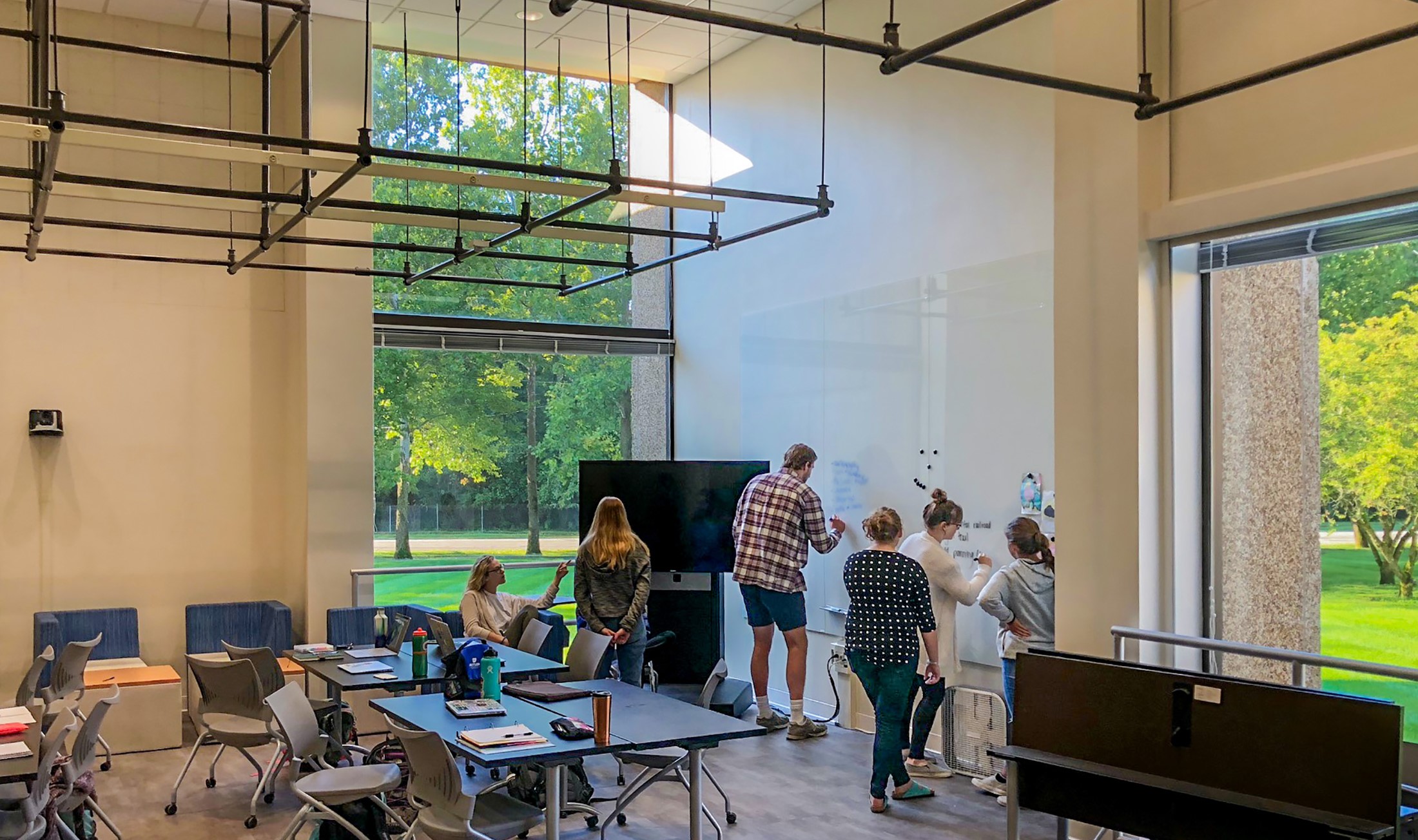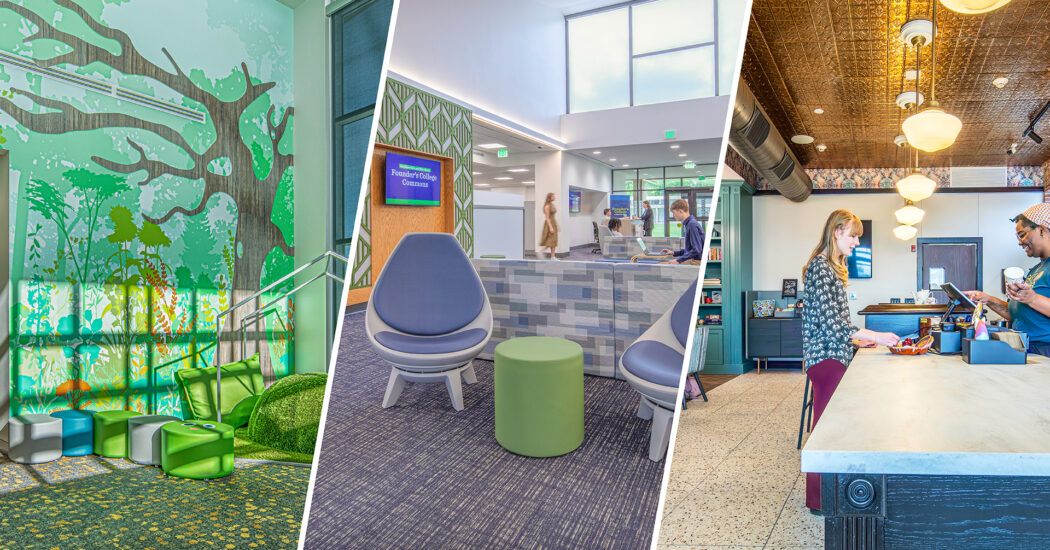How Can Architecture & Design Affect Higher Education?
-
Category
Studio-Higher Ed, Innovation -
Posted By
Sarah Hempstead -
Posted On
Oct 23, 2018

Butler University – College of Education at CTS
If you’ve spent any amount of time on a well-designed, beautifully constructed university campus, then you understand the importance of architecture when it comes to influencing higher education. Not only can architecture inspire imagination and creativity, but it can unite students, teachers, and the community to create a space that feels energized, organic, and magnetic.
There are several ways architects can influence the way a higher education building is interpreted by the people who will use it every day. Considering there are more than 21,000 universities across the globe (and hundreds more currently being constructed), this specific design niche makes a notable footprint in the world’s landscape.
Can a design help make students more successful? Can architecture unite people from diverse backgrounds and beliefs?
We think so.
Here are a few ways that architecture and design directly affect higher education:
Vertical Spaces. Because many higher education campuses and their buildings are so large, it’s easy for designs to focus on the outward, horizontal sprawl. And, while often beautiful to look at, there’s a feeling of being “lost in a crowd” that can make these types of buildings and spaces less than conducive to interaction and collaboration. Instead, higher education facilities can look to find ways to build up – not out. These vertical spaces, when designed for students and staff in particular, become a powerful magnet for interaction, allowing individuals on campus to feel less “lost” and more as part of the crowd.
Cross-Pollination. Traditionally, most higher education campuses were divided into “schools”, separating one group of students and its professors from another. However, new facilities or those undergoing renovation and restoration are re-thinking this concept. Rather than sectioning people away from each other, as if some sort of quarantine is in place, new buildings and spaces are being designed so that students and staff from different disciplines have an opportunity to interact. This can take shape in many ways, but some of the most interesting are a sort of tunnel-bridge concept that connect buildings on multiple levels.
Natural Light. The more light you let in, the more successful you will be. Or, at least, that’s what many studies are confirming. In addition to more success, natural light is said to make people happier, reduce stress, and combat illness as well. By finding ways to allow more natural light in, higher education facilities can improve the environment for everyone working and learning on campus. In addition to natural light, which can be let in by windows and skylights, creating spaces that are truly light-filled, such as a wall of windows or clear walls, can help make studying and meetings more enjoyable.
Student-Centric. Students want to feel like they belong at their university or college – and that’s something that great design can accomplish. When creating a space, architects should look at developing areas that are convenient for students to enjoy. Places to safely store laptops and personal items in between lectures, attractive lobbies with comfortable and adaptable furniture, as well as large seating areas where bigger study or friend groups can meet will help to bolster the attitude and loyalty of students on campus.
Skip-Stop Strategy. In order to create healthy, vibrant spaces on higher ed campuses, architects should look for ways to incorporate the “skip-stop” strategy. The idea behind this concept is to help students and staff circulate easily, offering more opportunities for exercise as well as those chance encounters with friends and acquaintances. A notable innovation are skip-stop elevators, which only stop on certain floors, encouraging individuals to use the stairs. In cases where the stairs are designed in conjunction with this strategy, you can develop staircases that are grand, wide, filled with light, and a natural place to stop and chat. In order to be ADA compliant and for employee convenience, there must be a secondary elevator option which does stop on each floor.
Outdoor Strips. Acting as gateways to campus, large outdoor strips can be an inviting way to welcome students and visitors. They’re also the perfect place to host sports activities and large gatherings. Beautiful to walk through, these strips are also another way to bring the campus community together on a daily basis.
When designed and built with the intention to inspire the next generation, there’s no limit to how beneficial architecture can be on higher education campuses.







